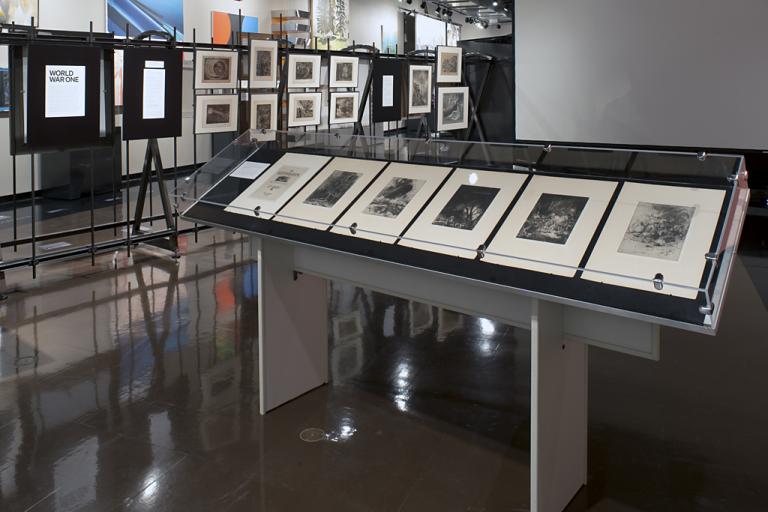Monoplan M.S attaquant un LVG [Monoplane Morane-Saulnier (M.S.) attacking a Luftverkehrsgesellschaft (LVG)], Maurice Busset
Artwork Overview
Maurice Busset, artist
1879–1936
Monoplan M.S attaquant un LVG [Monoplane Morane-Saulnier (M.S.) attacking a Luftverkehrsgesellschaft (LVG)],
1920
Portfolio/Series title: Nos Escadrilles Pendant La Grande Guerre (Our Squadrons during the Great War)
Where object was made: France
Material/technique: color woodcut
Dimensions:
Image Dimensions Height/Width (Height x Width): 248 x 348 mm
Image Dimensions Height/Width (Height x Width): 9 3/4 x 13 11/16 in
Sheet/Paper Dimensions (Height x Width): 330 x 478 mm
Sheet/Paper Dimensions (Height x Width): 13 x 18 13/16 in
Image Dimensions Height/Width (Height x Width): 248 x 348 mm
Image Dimensions Height/Width (Height x Width): 9 3/4 x 13 11/16 in
Sheet/Paper Dimensions (Height x Width): 330 x 478 mm
Sheet/Paper Dimensions (Height x Width): 13 x 18 13/16 in
Credit line: Museum purchase: Letha Churchill Walker Memorial Art Fund
Accession number: 2009.0124.11
Not on display
If you wish to reproduce this image, please submit an image request
![Monoplan M.S attaquant un LVG [Monoplane Morane-Saulnier (M.S.) attacking a Luftverkehrsgesellschaft (LVG)], Maurice Busset](https://sma-search-api.ku.edu/271eaba00a5896ad7d382f6b3cfa5eeedb2599d8ed4071cc8fc9bad7b36fd308/2009.0124.11.jpg)



